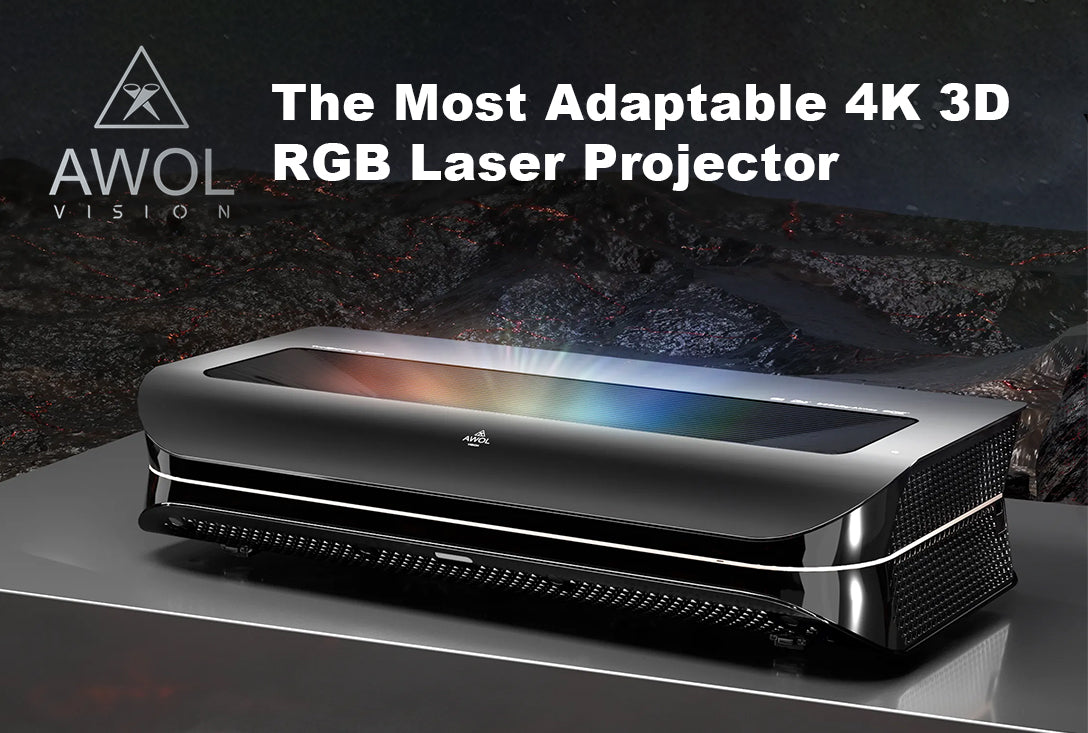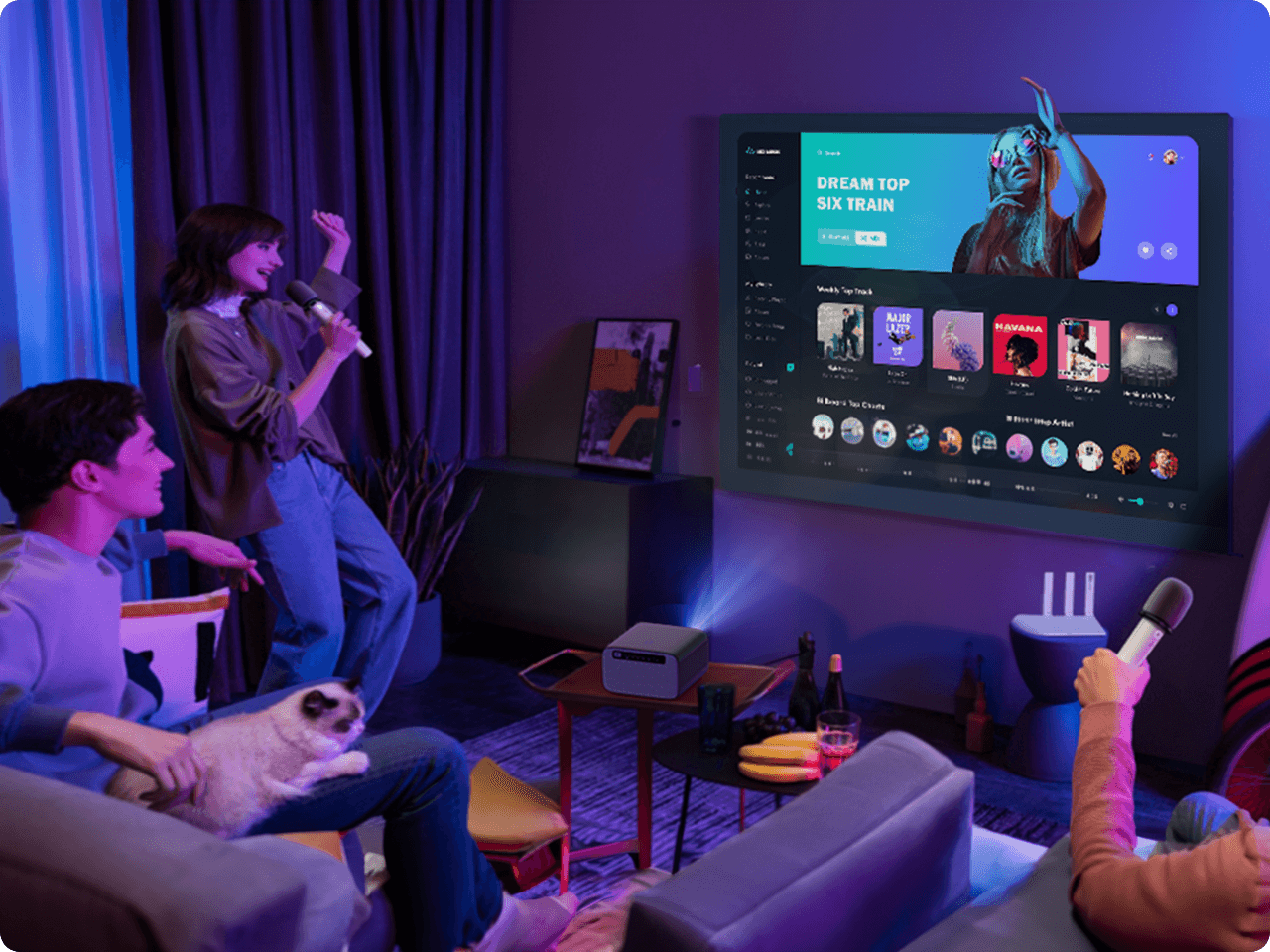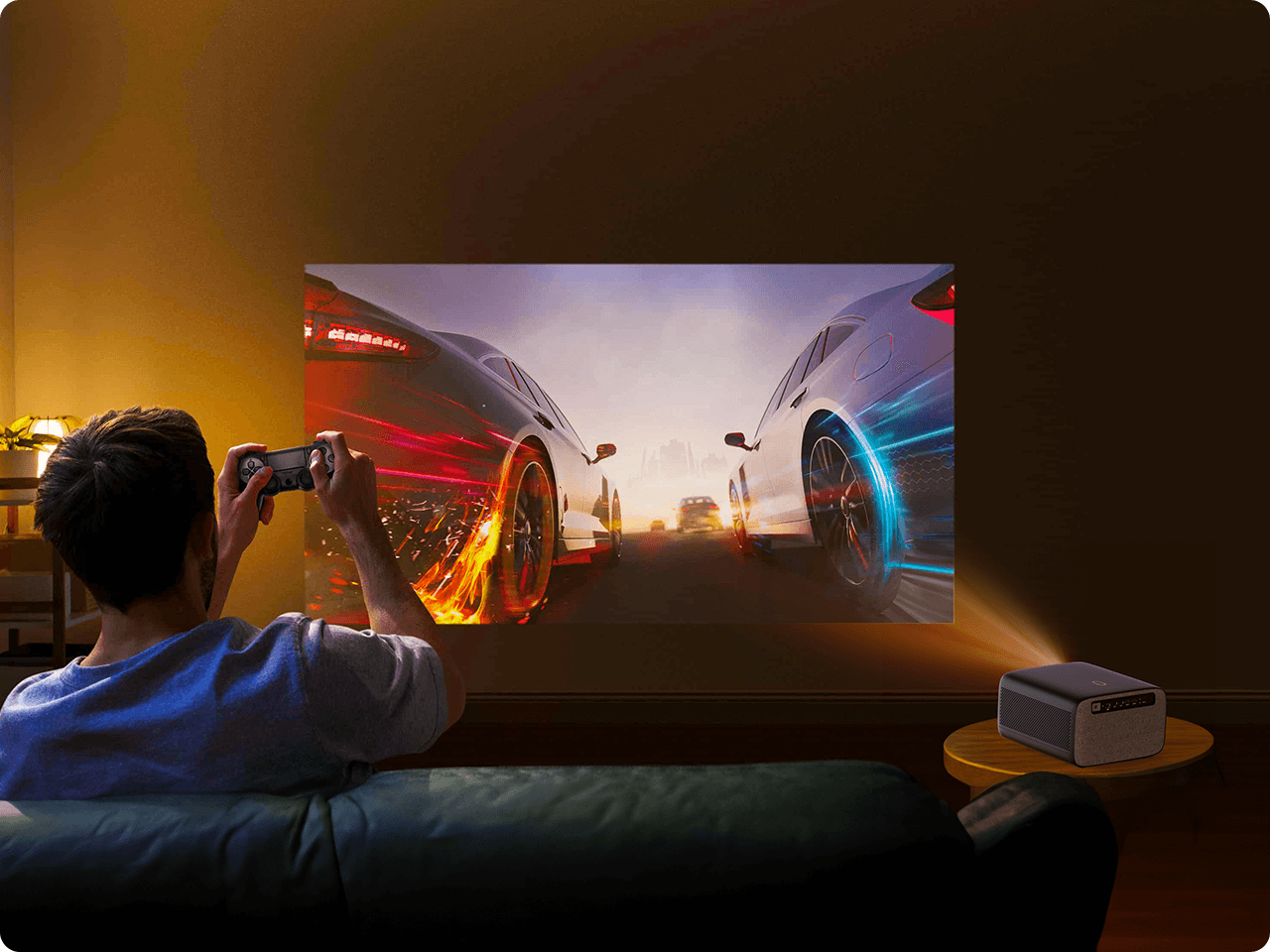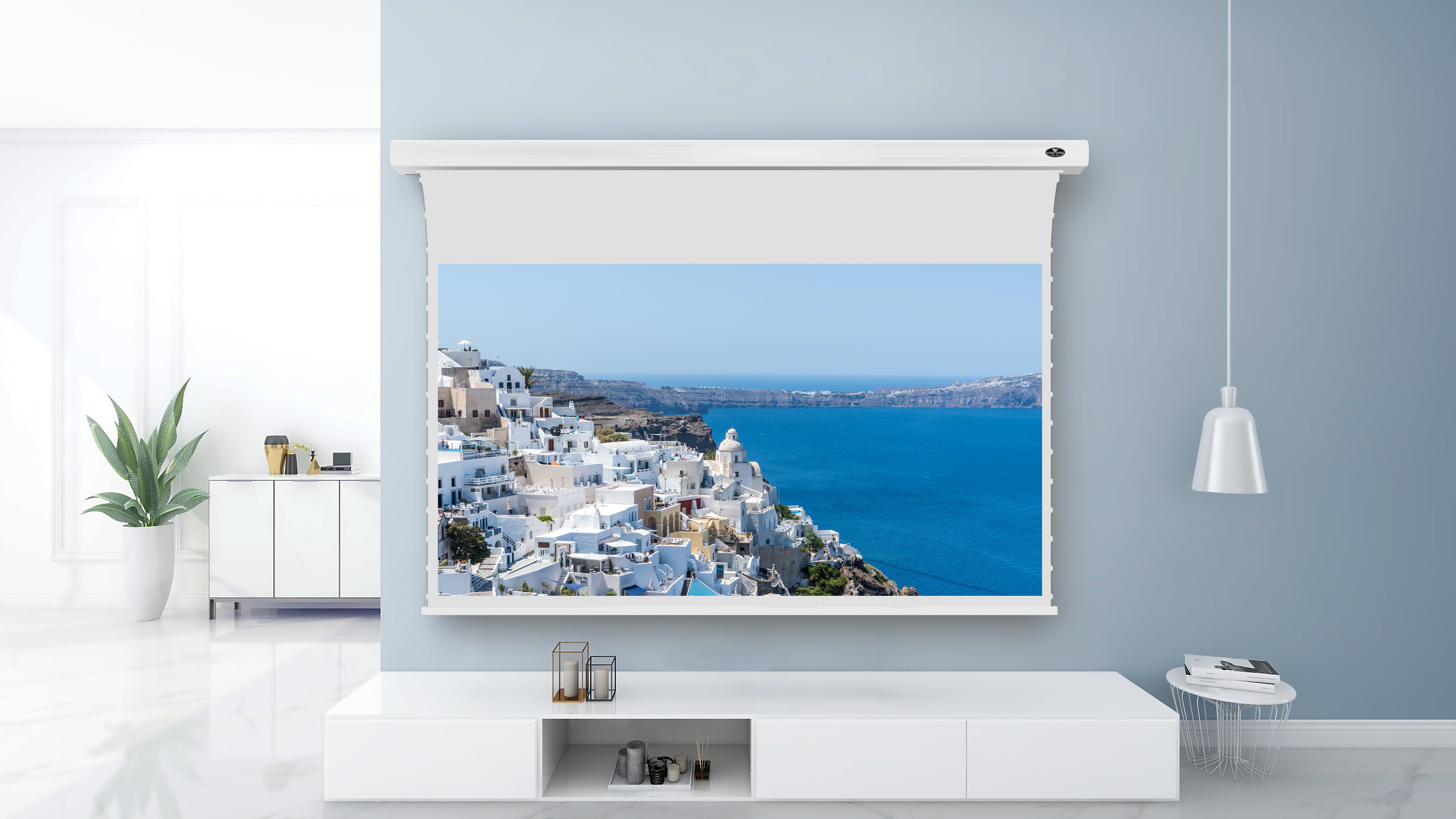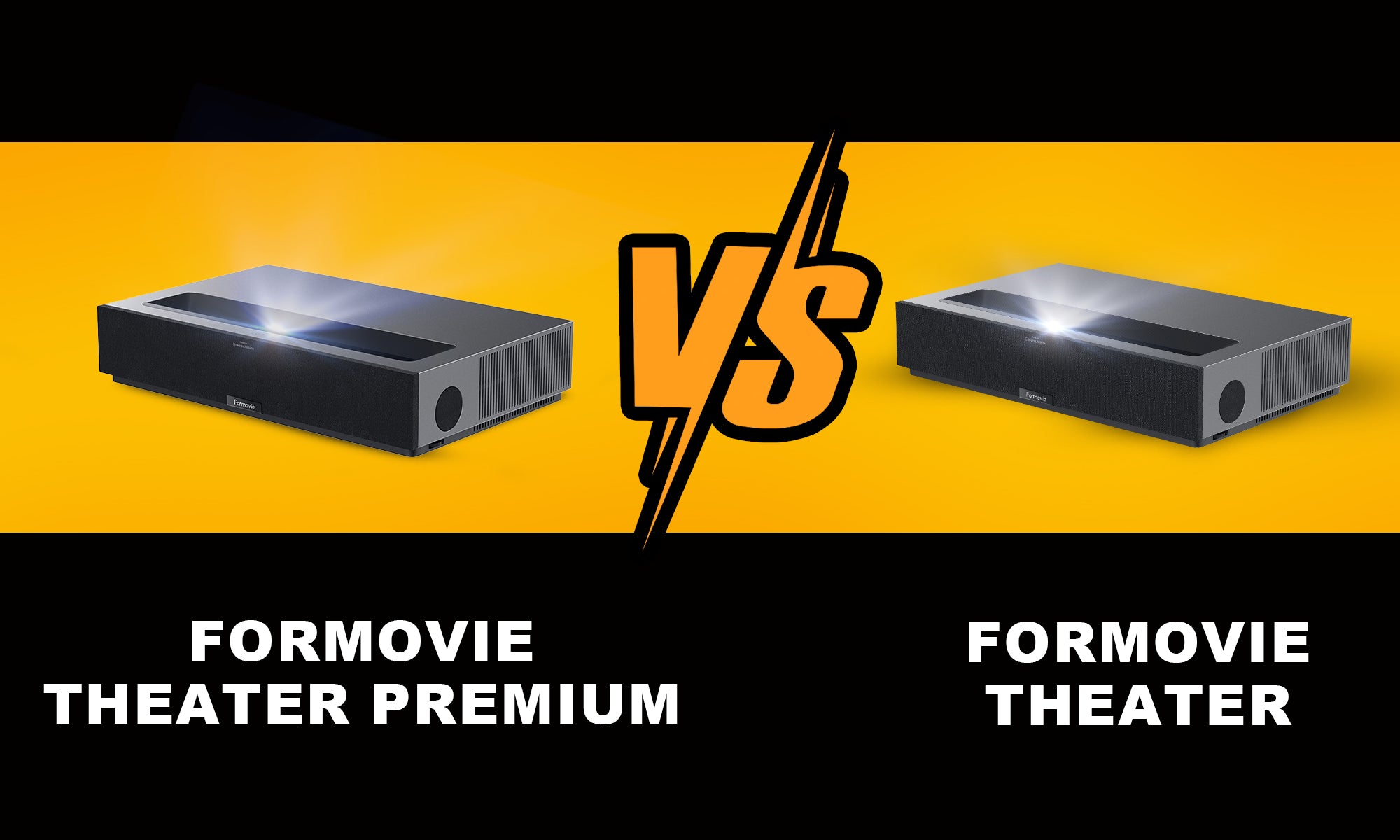Understanding Different Types of Projector Screens
Description: Permanently mounted to the wall or ceiling.
Best For: Dedicated home theaters.
Advantages: Stable, high-quality image, and ideal for a permanent setup.
Description: Can be retracted or lowered using a motor, including drop-down screens and floor-rising screens.
- Drop-Down Screens: Rolls down from a ceiling-mounted case. Ideal for rooms where ceiling installation is feasible, saving space and discreet when retracted.
- Floor-Rising Screens: Rises from the floor using a motorized mechanism. Best for rooms where wall or ceiling mounting isn't ideal, providing convenience and space-saving.
Best For: Multi-purpose rooms.
Advantages: Convenient, hides when not in use, and suitable for spaces with varying needs.
- Portable Screens Description:
Easy to move and set up in different locations. Best For: Flexible use in different environments. Advantages: Lightweight and versatile, ideal for presentations or temporary setups.
How to Choose the Right Size Screen for Your Space
Selecting the right size screen is crucial for an optimal viewing experience. The size of the screen should be proportional to the size of the room and the distance from the screen to the seating area.In general, there is a common recommended ratio for viewing distance relative to screen size to ensure a comfortable viewing experience. This ratio often depends on the screen resolution and the type of content, but here are some general guidelines:
Note: Whether it is 1080P or 4K depends on the projector
The recommended viewing distance is 1.5 to 2 times the diagonal size of the screen.
For example, if the screen size is 100 inches, the recommended viewing distance would be approximately 150 to 200 inches (about 3.8 to 5 meters).For a 120-inch projector screen, the recommended viewing distance is approximately 180 to 240 inches (about 4.5 to 6 meters).
Due to the higher resolution of 4K, the viewing distance can be closer, generally recommended as 1 to 1.5 times the diagonal size of the screen.
For example, for a 100-inch 4K projector screen, the viewing distance would be approximately 100 to 150 inches (about 2.5 to 3.8 meters). For a 120-inch 4K projector screen, the recommended viewing distance is approximately 120 to 180 inches (about 3 to 4.5 meters).
|
Screen |
Gain |
Viewing Angle |
Features |
Suitable scenes |
|
0.6 |
170° |
1.Lower image brightness, suitable for dimly lit environments. 2.Wider viewing angle, with more uniform image quality from various angles. |
Dark home theaters or conference rooms |
|
|
1.2 |
100° |
1.Significantly increases image brightness, suitable for use in well-lit environments. 2.Typically has a narrower viewing angle, with the best effect directly in front and reduced performance from the sides. |
Home Entertainment-Bright Room or conference rooms |
It's also essential to consider the aspect ratio of the screen. The most common aspect ratios are 16:9, which is standard for HDTVs, and 4:3, which is more traditional. For cinematic experiences, a 2.35:1 aspect ratio might be preferable. Measure your space carefully and consider the seating arrangement to ensure everyone gets a great view.

Material Matters: Selecting the Best Fabric for Your Screen
Projector screen materials can significantly impact the quality of your viewing experience. The most common materials include the following five:
|
Material Type |
Characteristics |
|
Affordable, durable, good brightness and contrast like Fresnel Optical Screen |
|
|
Superior brightness, contrast, and color accuracy; ideal for bright settings but typically more expensive like Black Series ALR/CLR Screen |
|
|
Fabric |
Flexible and portable; suitable for temporary use. |
|
Glass Bead |
Brightens image through enhanced light reflection; narrower viewing angle. |
|
Metalized |
Enhances brightness; good for bright environments but may distort colors. |
By understanding these different types of screens and materials, you can choose the best projector screen to suit your needs, whether you're looking for a motorized projector screen, a portable projector screen, or a fixed frame screen for your home theater.
For more help,contact us here >>


